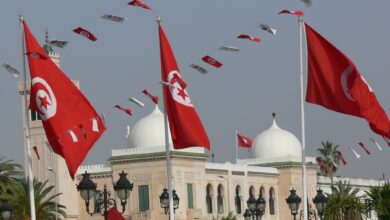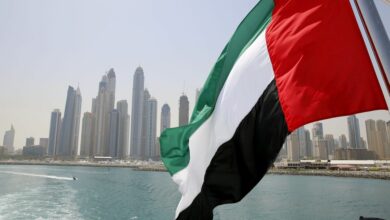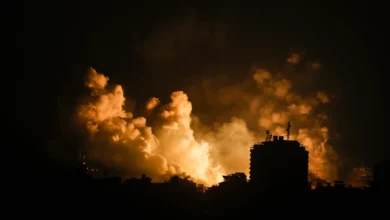Residents of Sidi Bouzid, the central Tunisian town where the 2011 uprising began, staged a general strike on Tuesday, with hundreds protesting against the ruling Islamist party, an AFP journalist reported.
Offices and shops were shut in the town center, although some butchers stayed open to allow customers to prepare for iftar, when Muslims break their day-long fast during Ramadan.
Several hundred protesters — members the political opposition and trade unions, as well as civil society groups and employer organizations — marched together towards the court house on the outskirts of Sidi Bouzid.
They shouted slogans including: "The people want the fall of the regime!" and "Justice, woe to you, Ennahda has power over you!" in reference to the moderate Islamist party that heads the ruling coalition after winning elections last October.
They also denounced the suppression of recent protests and called for the freeing of fellow activists arrested last week during demonstrations that were dispersed by police firing tear gas and rubber bullets.
By 1100 GMT the activists had gathered outside the court house, which was protected by a heavy deployment of police.
Some protesters smashed the window of a car belonging to an Al Jazeera TV crew — the Qatar-based satellite news channel is accused by government critics of supporting Ennahda — but otherwise no violence was reported.
Separately, around 150 Ennahda supporters staged a rival protest in the town center.
The Islamist-led government has faced growing dissent in recent weeks, with thousands of people demonstrating in the capital late on Monday for women's rights in the biggest show of force by the opposition since April.
Sidi Bouzid is where the uprising began that eventually toppled former dictator Zine al-Abidine Ben Ali and touched off the Arab Spring, when a street vendor immolated himself in December 2010 in protest over his own precarious livelihood.
The town is located in a particularly marginalized region, and analysts warn that poor living conditions and high youth unemployment there and elsewhere — driving factors behind the revolution — have improved little since then.




